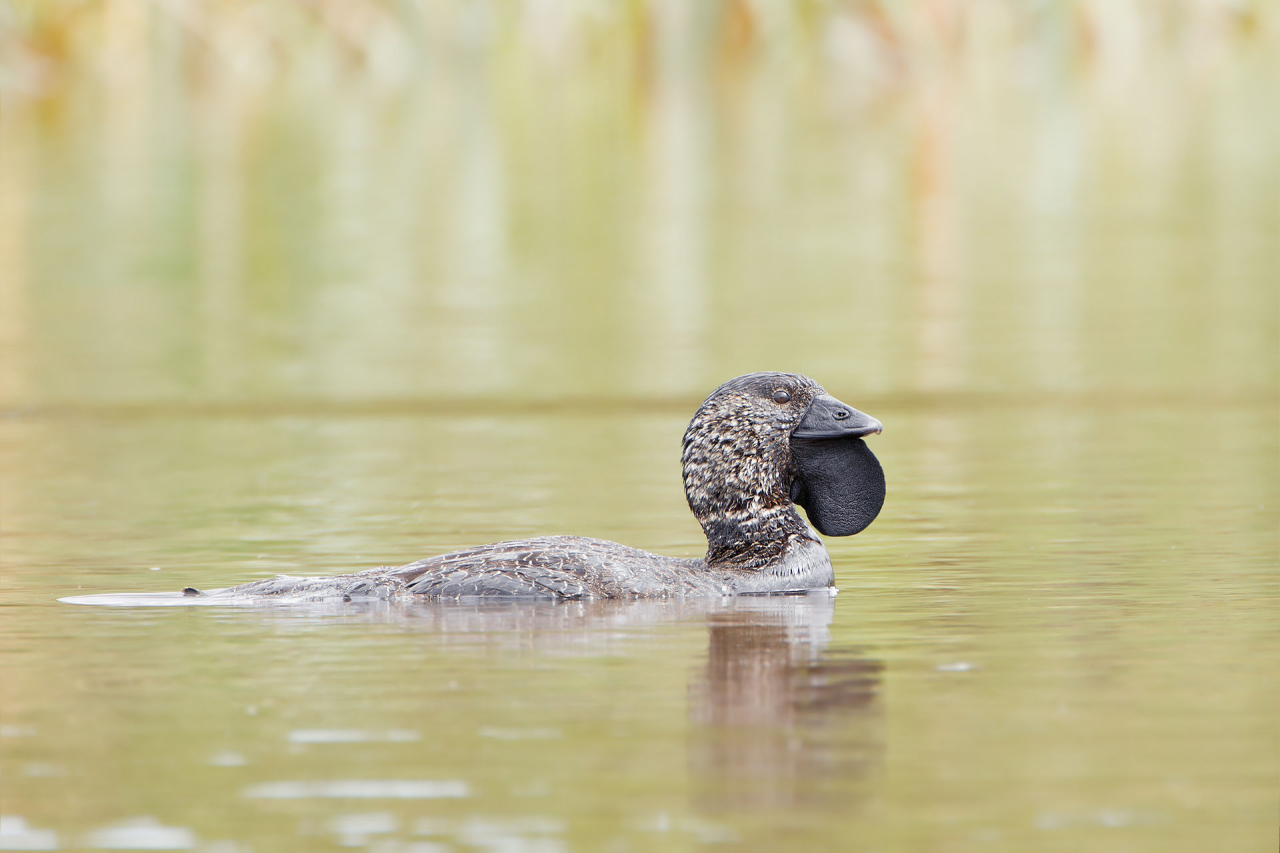Biziura lobata, B. delautouri

By J. J. Harrison, CC BY-SA 3.0
Name: Biziura delautouri
Status: Extant
First Described: 1824
Described By: Stephens
Classification: Dinosauria, Saurischia, Eusaurischia, Theropoda, Neotheropoda, Averostra, Tetanurae, Orionides, Avetheropoda, Coelurosauria, Tyrannoraptora, Maniraptoriformes, Maniraptora, Pennaraptora, Paraves, Eumaniraptora, Averaptora, Avialae, Euavialae, Avebrevicauda, Pygostylia, Ornithothoraces, Euornithes, Ornithuromorpha, Ornithurae, Neornithes, Neognathae, Galloanserae, Anseriformes, Anseres, Anatoidea, Anatidae, Anatinae
Another duck for us all today! Biziura is a genus of two stiff-tailed duck, the extinct New Zealand Musk Duck and the living Musk Duck of Australia. The extinct species is known from subfossil remains, so the Musk Ducks only probably appeared sometime in the Holocene, between 10,000 years ago and today. The New Zealand Musk Duck is known from both the South and North Islands of New Zealand, which prior to human arrival in the area was a paradise for birds free of most mammals apart from a few bats, and with birds filling niches typically occupied today by large mammals. The New Zealand Musk Duck was sexually dimorphic, with males much larger than the females, and with both having bigger legs and shorter wings than the living Musk Duck, making it more sedentary but still capable of flight. They lived in wetlands in Australia, primarily large permanent swamps, and it became extinct due to hunting by humans.

By J. J. Harrison, CC BY-SA 3.0
The living Musk Duck is unique to Australia, primarily on the southern side of the island. It is smaller than its extinct counterpart, with drab dark grey and brown plumage that does not differ between the two sexes. Males are much larger than females, and they are the second heaviest diving duck in the world. They float low in the water like cormorants, and they use their large webbed feet to paddle through the water. The ducklings themselves are dark brown. They have distinctive fanned tails, which helps to tell them apart from other ducks. Though males and females look identical other than size most of the time, males do have a distinct feature in the breeding season: a very large bill lobe, used for display.

By Midekool, CC BY-SA 3.0
The Musk Duck lives in deep lakes and wetlands with lots of open water, where they prefer to spend their time, as they are awkward on dry land and rarely fly. Still, they are extremely agile in the water, using their feet and tail to turn and twist in the water effortlessly. They also go below the surface, submerging for up to a minute at a time in order to escape predators or unwanted company, as well as to search for food such as insects and aquatic invertebrates. They also sleep on the water. They are fairly solitary, preferring to be alone and fighting each other on the water, though juveniles will form large flocks sometimes for safety. They can live up to 20 years of age, making them a long-lived duck species. They breed primarily during July and January, laying clutches in September and October more than any other time. They give off a musky odor - hence the name - during this time, and the males advertise with lots of splashes and calls for mating. They are probably promiscuous, and the females nest in secluded locations with tall reeds and protected by deep water. The young then stay close to the mother for several months, even riding on her back, until they are almost full-grown. This bird is, thankfully, not threatened with extinction, as they are not hunted very much.
Sources:
https://en.wikipedia.org/wiki/Biziura
















